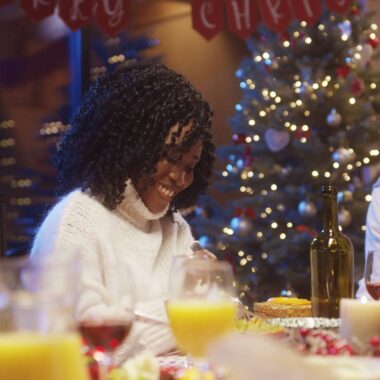Sorted by Topic
From how to start and carry on a great conversation to the traits of the most admired persons.
Give your children the skills to soar through life. And gain skills to manage your relationship with family.
Tips for shining as brightly as the lights of any holiday! Plus, dining etiquette and the hallmarks of the most-liked guests and hosts.
The Latest
The 5 Manners of Valentine’s Day Everyone Should Know
By: Maralee McKee People seem to have either one of two thoughts about Valentine’s Day. Some see it as the most romantic, glorious day of affection, gifts, and expressions of love of the year. Others view it as a day they wish they could sleep through so they didn’t have to look at even one gushing, bouquet-carrying, heart-shaped-chocolate-eating, drunk-on-love person. I’ve been on both sides of the Valentine’s Day love fest, and on both sides feelings are deep and emotions are high. There’s a problem with the way we celebrate Valentine’s Day. It should never hurt, because it should never be an either-or day. Valentine’s Day should be a day when no one feels left out. That’s because everyone is loved by someone, and that someone (or lots of someones) should express it. The day would be sweeter if there were less stress about gifts, dinners, and flowers. It would be sweeter if there wereContinue Reading
5 Simple, Savvy, Sincere Ways to Show Your Love
You’ve probably heard the much quoted joke about the couple that’s been married for decades. The wife asks her husband, “Why don’t you ever tellContinue Reading
Links to Love from Around the Web- Valentine’s Edition!
Here’s a collection of links to love from around the web. You’ll find Valetine’s Day centered posts and more. Enjoy!!! What is The History ofContinue Reading
Christmas Card Etiquette — Your Complete Q & A Guide
Christmas card etiquette helps you send out your Season’s Greetings with the warmth and good wishes you want them to have. From what to writeContinue Reading
The Top 10 Manners for Hosts and Guests on Christmas Day
Here are ten manners for hosts and guests on Christmas Day. When put into practice, if you’re having a great Christmas, they’ll help youContinue Reading
Knowing what not to say is often more important than knowing what to say. Here are five questions not to ask at a party – at Christmas or any time. I find that people often have friends a lotContinue Reading
Continue ReadingHere’s your simple and complete guide to holiday and Christmas tipping etiquette. You’ll find who is usually tipped, plus suggested tip amounts based on what others give. Thriftiness is a virtue, so it’s a positive thing that manyContinue Reading
Continue ReadingOftentimes all eyes are on us when we open our Christmas gifts, and it can be nerve-wracking! Here you’ll find the 5 manners of opening gifts and the number-one don’t. Put these skills into practice, and you’ll always know theContinue Reading
Continue ReadingWhether you have ten parties on your calendar or just one or two, Christmas is in full swing, and now’s the time you’re meeting and mingling with new people: friends of family members, friends of friends at social gatherings,Continue Reading
Continue Reading













